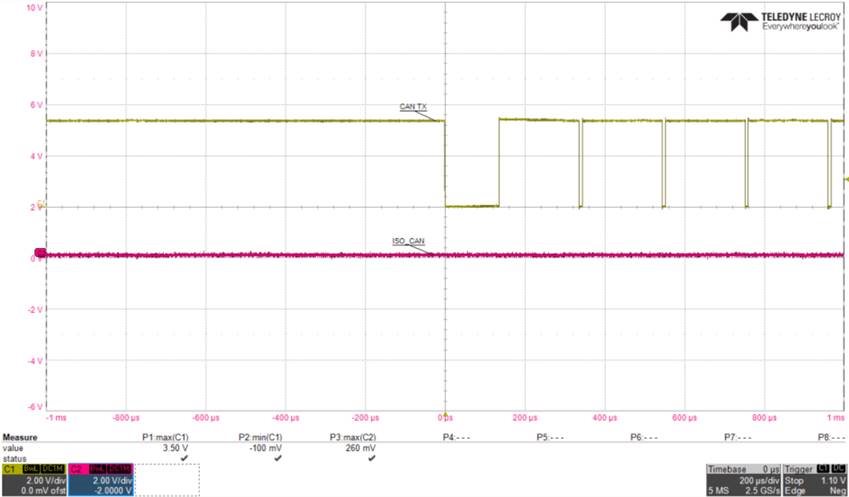Other Parts Discussed in Thread: AM3352, SN65HVD231, TCAN337G, TCAN330G
Dear Team,
The TCAN1042 can P2P replace SN65HVD231DR, right?
The customer replaces the SN65HVD231DR but it didn't work.
Originally the SN65HVD231DR work well on the system, we replace it by TCAN1042 directly.
The CAN frequency is 125kHz, can you check what is wrong here?
The input signal is CH1 from AM3352, CH2 is after TCAN1042.
BR
Kevin



